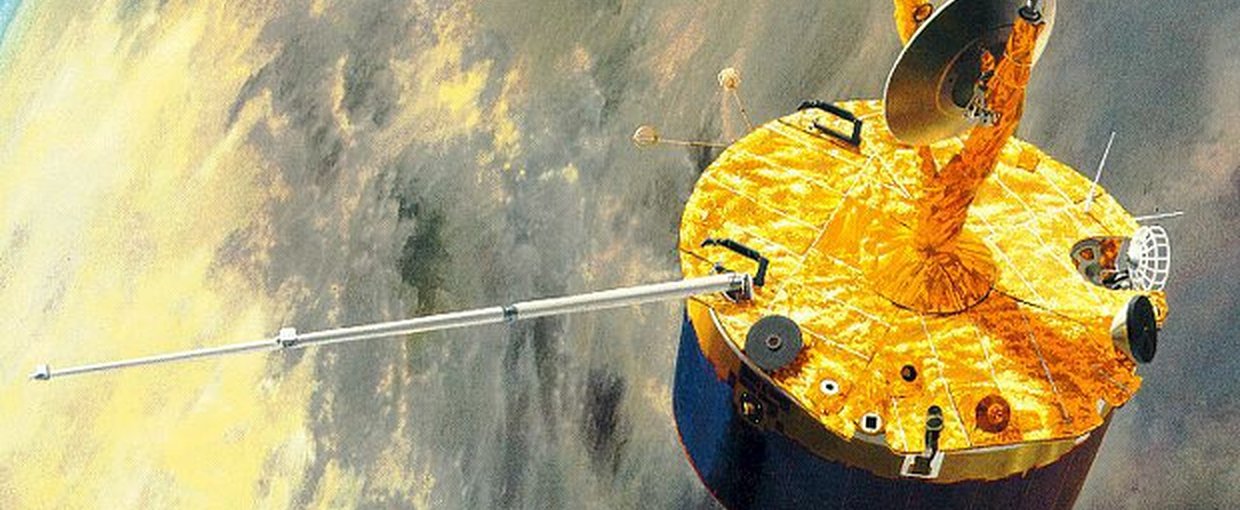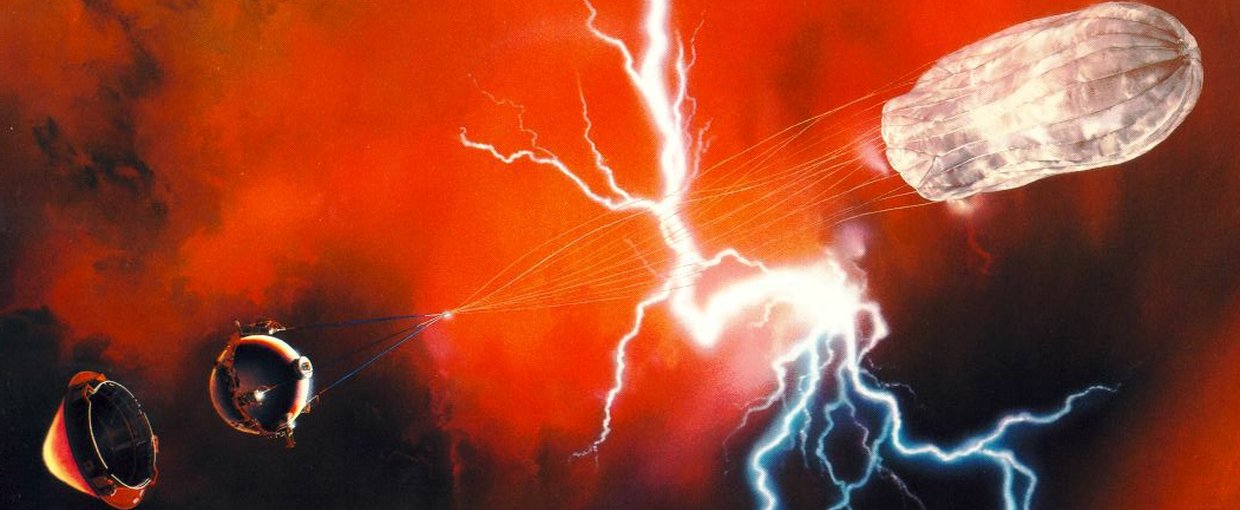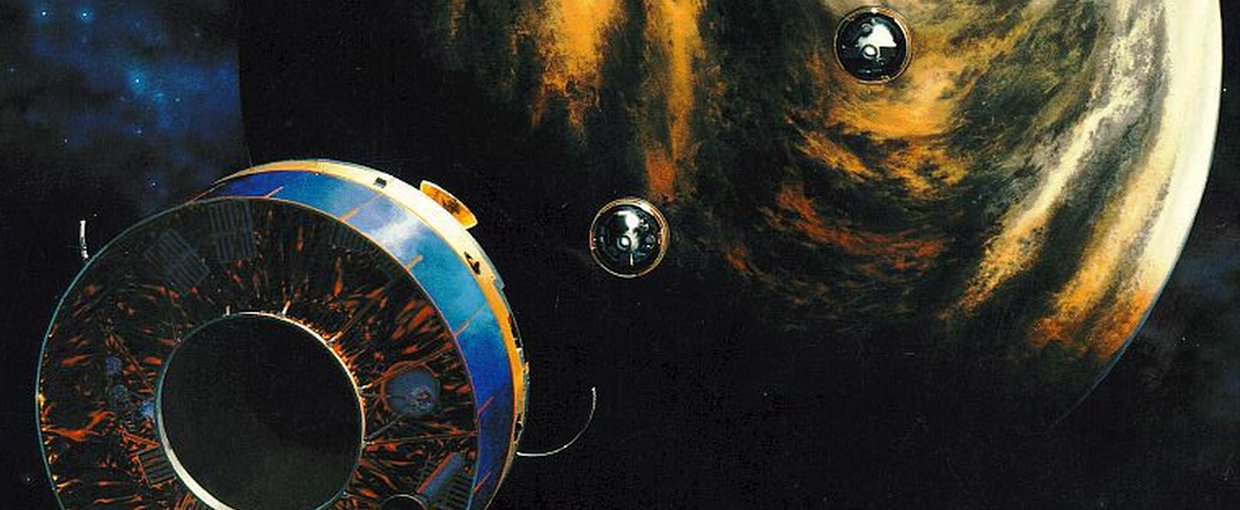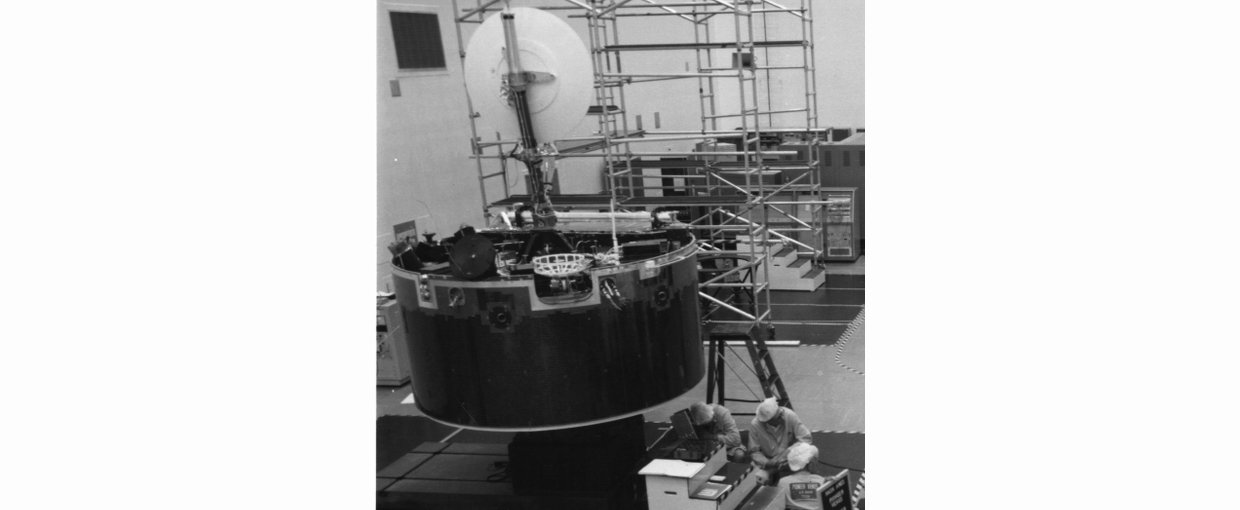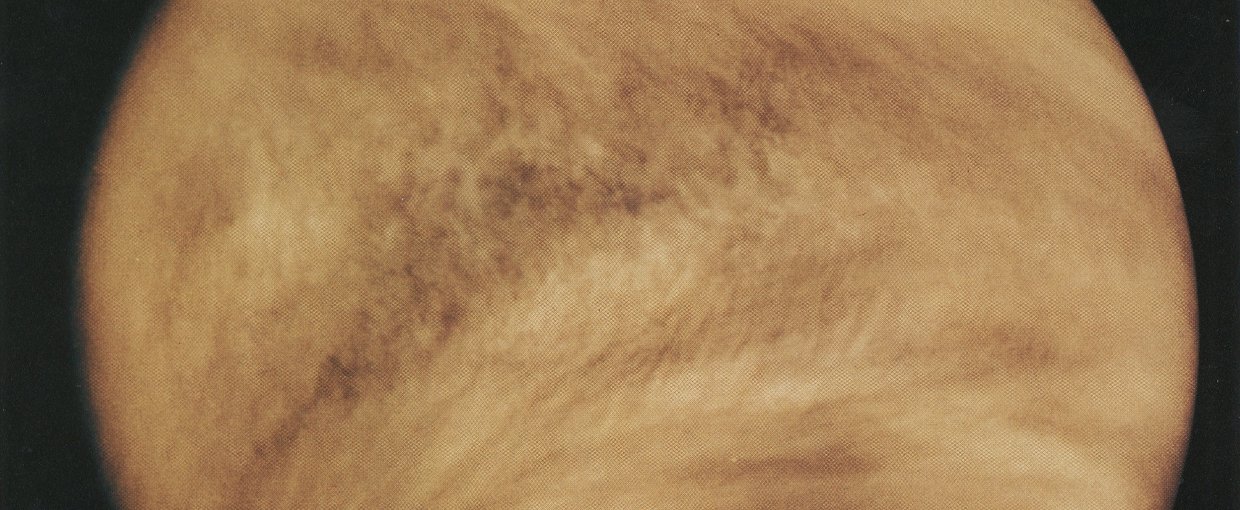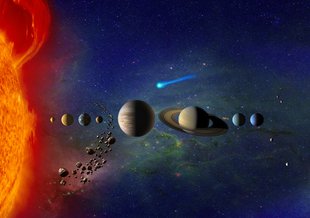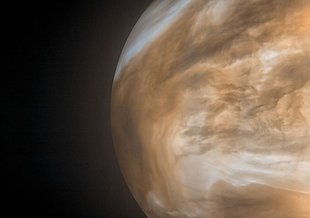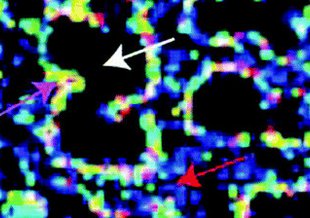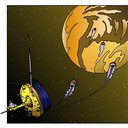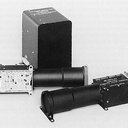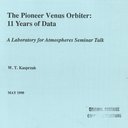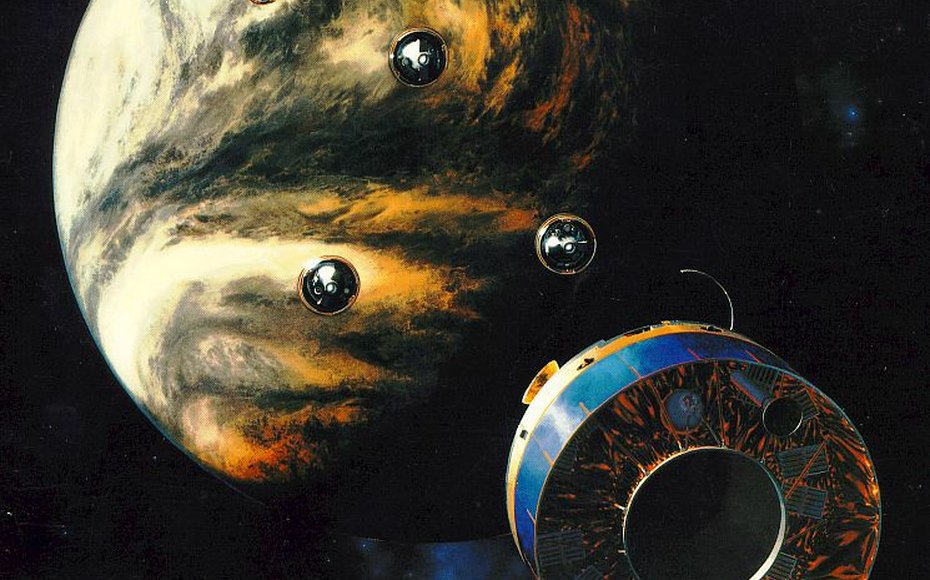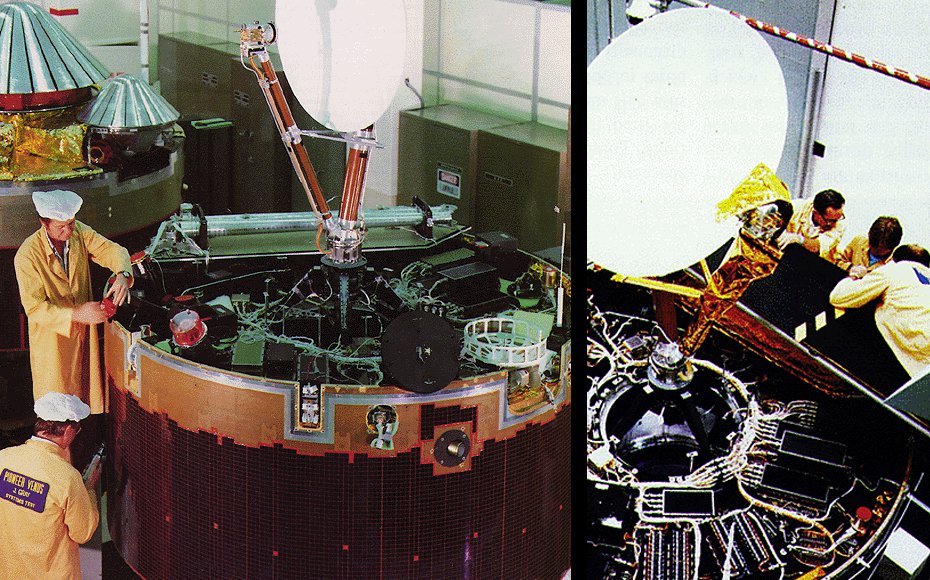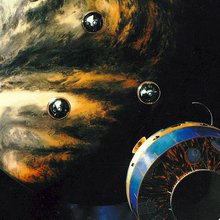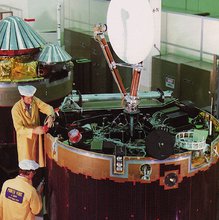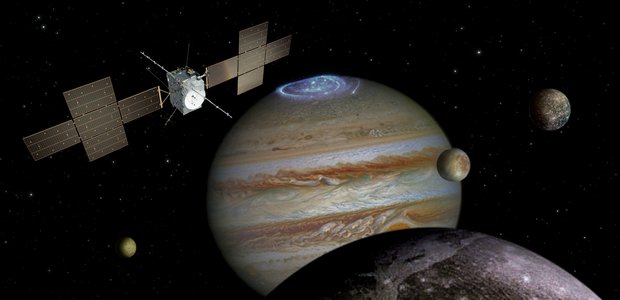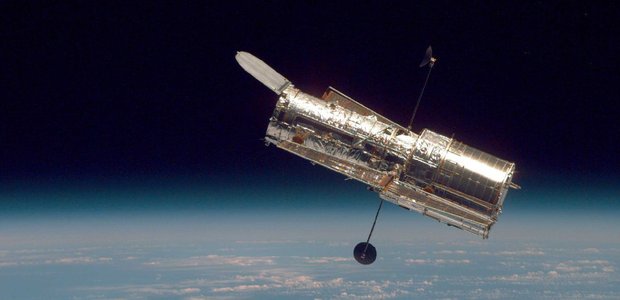- Launch Date May 19, 1978
- Arrival Date December 03, 1978
- End DateOctober 08, 1992
- Mission TypeOrbiter
- TargetVenus
Mission Overview
The Pioneer Venus mission consisted of two components, launched separately: an Orbiter and a Multiprobe.
The Pioneer Venus Orbiter was launched on May 20, 1978, and inserted into an elliptical orbit around Venus on December 4, 1978. The Orbiter was a flat cylinder 2.5 m in diameter and 1.2 m high.
The Pioneer Venus Multiprobe launched on August 8, 1978, and consisted of a bus that carried one large and three small atmospheric probes. The large probe was released on November 16, 1978 and the three small probes on November 20. All four probes entered the Venus atmosphere on December 9, followed by the bus.
Relevance to Astrobiology
The Pioneer Venus project was one of many early NASA missions to the planet Venus. When NASA first began, scientists still wondered about life’s potential on Venus, a planet of similar size to the Earth. After missions visited the planet and returned data about the surface and atmosphere, scientists began to realize that Mars was a better target in our search for past or present life in the Solar System.
However, Venus provided invaluable data about habitability on rocky planets. Scientists were able to compare atmospheric and surface processes on Venus and the Earth, providing them with the chance to perform comparative planetology. What we’ve learned about Venus has helped shape our understanding of what makes the Earth habitable for life as we know it.
Pioneer Venus Science
The Pioneer Venus Orbiter carried seventeen science experiments onboard:
- Cloud Photopolarimeter (measure the vertical distribution of the clouds)
- Surface Radar Mapper (determine topography)
- Infrared Radiometer (measure IR emissions from atmosphere)
- Airglow Ultraviolet Spectrometer (measure scattered and emitted UV light)
- Neutral Mass Spectrometer (determine the composition of the upper atmosphere)
- Solar Wind Plasma Analyzer (measure properties of the solar wind)
- Magnetometer (characterize the magnetic field at Venus)
- Electric Field Detector (study the solar wind)
- Electron Temperature Probe (study the thermal properties of the ionosphere)
- Ion mass spectrometer (characterize the ionospheric ion population)
- Charged Particle Retarding Potential Analyzer (study ionospheric particles)
- Two Radio Science Experiments (determine the gravity field)
- Radio Occultation Experiment (characterize the atmosphere)
- Atmospheric Drag Experiment (study the upper atmosphere)
- Radio Science Atmospheric and Solar Wind Turbulence Experiment
- Gamma Ray Burst Detector (record gamma-ray burst events)
The Pioneer Venus Multiprobe delivered an additional seven science experiments onboard the large atmospheric probe:
- Neutral Mass Spectrometer (measure the atmospheric composition)
- Gas chromatograph (measure the atmospheric composition)
- Solar flux radiometer (measure solar flux penetration in the atmosphere)
- Infrared radiometer (measure distribution of infrared radiation)
- Cloud Particle Size Spectrometer (measure particle size and shape)
- Nephelometer (search for cloud particles)
- temperature, pressure, and acceleration sensors

